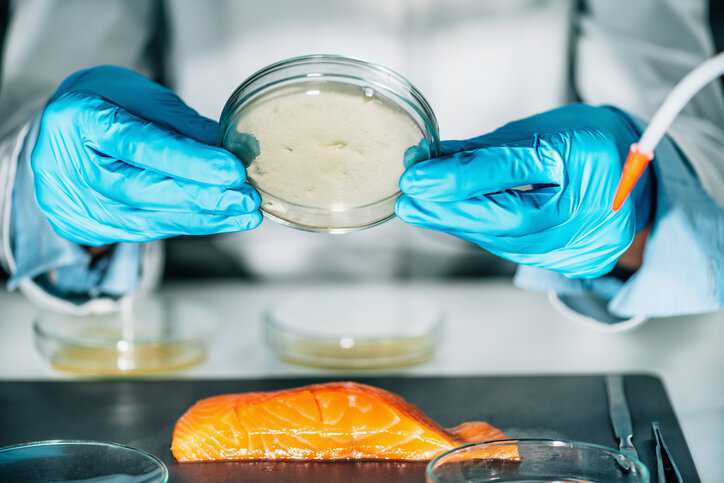According to the CDC, raw or undercooked fish can cause about 1.2 million illnesses, 23,000 hospitalizations, and 450 deaths each year in the United States. In fact, one study conducted by field laboratories of the U.S. Food and Drug Administration (FDA) found that about 10% of imported raw seafood and 3% of domestic raw seafood tested positive for salmonella. Therefore, examining fish for pathogenic bacteria via microbiological testing is essential to identify harmful microorganisms. ISO 6887-3:2017— Microbiology Of The Food Chain – Preparation Of Test Samples, Initial Suspension And Decimal Dilutions For Microbiological Examination – Part 3: Specific Rules For The Preparation Of Fish And Fishery Products covers specifications for the microbiological examination of fish and fishery products.
Microbiology Examinations of Fish
A number of microbiological tests of fish and fish products are used by authorities to check that the microbiological status is satisfactory. Microbiological analysis involves determining the total viable aerobic plate count (APC) as well as evaluating the enumeration of total coliforms (i.e., bacteria that are found in the soil, in the water that has been influenced by surface water, and in human or animal waste) and fecal coliforms (the group of the total coliforms that are considered to be present in the gut and feces of warm-blooded animals).
These methods are used to identify the bacterial population in a food sample. The purpose of microbiological tests is to detect pathogenic bacteria in fish, such as Salmonella, Staphylococcus aureus (S. aureus), Shigella spp, Clostridium perfringens (C. perfringens), Bacillus cereus (B. cereus), and Campylobacter jejuni (C.). Pathogenic bacteria growth and toxin formation in fish and fishery products can cause consumer illness, which is why microbiological examinations of fish are imperative.
What Is ISO 6887-3?
ISO 6887-3:2017 specifies rules for the preparation of fish and fishery product samples for microbiological examination. The purpose of examinations performed on these fish samples can be for hygiene testing or quality control. The standard is intended to be used in conjunction with ISO 6887‑1, which defines the general rules for the preparation of the initial suspension and dilutions for microbiological examination. ISO 6887-3:2017 is applicable to:
- Raw fishery products, mollusks, tunicates, and echinoderms
- Processed products
- Raw or cooked frozen fish, crustaceans, mollusks, and others, in blocks or otherwise
ISO 6887-3:2017 includes special procedures for sampling raw mollusks, tunicates, and echinoderms from primary production areas.
Strategies for Controlling Pathogenic Bacteria in Fish
Strategies for the control of pathogens and infectious diseases in fish and fishery products include the following:
- Managing the amount of time that food is exposed to temperatures that are favorable for pathogen growth and toxin production
- Killing pathogenic bacteria by cooking, pasteurization, or by retorting
- Killing pathogenic bacteria by processes that retain the raw product characteristics
- Controlling moisture that is available for pathogen growth (water activity) in the product by formulation and/or by drying (poor water quality often leads to outbreaks of disease).
- Controlling the amount of salt or preservatives, such as sodium nitrite, in the product
- Controlling the level of acidity (pH) in the product
- Managing the amount of time that food is exposed to temperatures that are favorable for pathogenic bacteria growth and toxin production
ISO 6887-3:2017— Microbiology Of The Food Chain – Preparation Of Test Samples, Initial Suspension And Decimal Dilutions For Microbiological Examination – Part 3: Specific Rules For The Preparation Of Fish And Fishery Products is available on the ANSI Webstore.
